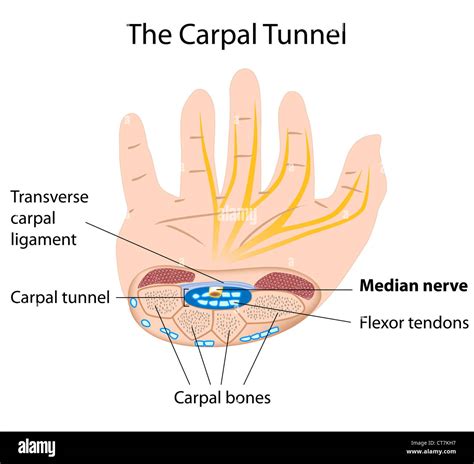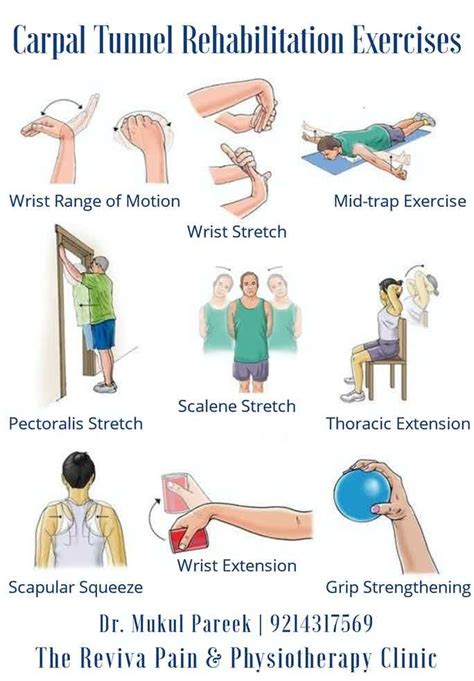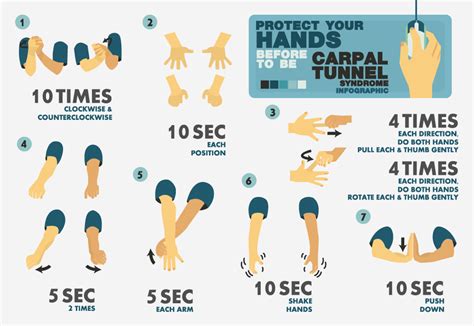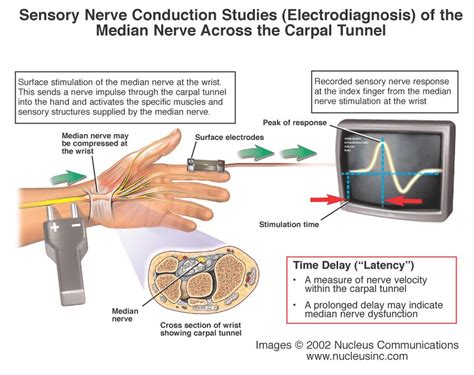Intro
Relieve carpal tunnel syndrome with simple exercises, stretches, and wrist mobilizations to reduce pain, numbness, and tingling, promoting hand and arm flexibility and strength.
The carpal tunnel is a narrow passageway on the palmar side of the wrist that protects the median nerve, which controls sensation and movement in the hand. Carpal tunnel syndrome (CTS) occurs when the median nerve is compressed or pinched, leading to numbness, tingling, and pain in the hand and wrist. With the increasing use of computers, smartphones, and other digital devices, CTS has become a common problem affecting millions of people worldwide. Fortunately, carpal tunnel relief exercises can help alleviate symptoms, prevent further injury, and improve overall hand and wrist function.
Carpal tunnel relief exercises are designed to stretch and strengthen the muscles and tendons in the hand, wrist, and forearm, which can help reduce pressure on the median nerve. These exercises can be simple and easy to perform, requiring minimal equipment or expertise. By incorporating carpal tunnel relief exercises into your daily routine, you can reduce your risk of developing CTS, manage existing symptoms, and improve your overall quality of life. Whether you're an office worker, athlete, or individual with a hobby that involves repetitive hand movements, carpal tunnel relief exercises can be a valuable addition to your self-care routine.
The importance of carpal tunnel relief exercises cannot be overstated. CTS can have significant consequences if left untreated, including permanent nerve damage, chronic pain, and limited mobility. By taking proactive steps to prevent and manage CTS, you can avoid these complications and maintain optimal hand and wrist function. In this article, we'll explore the benefits, working mechanisms, and steps involved in carpal tunnel relief exercises, as well as provide practical examples and statistical data to support their effectiveness.
Carpal Tunnel Anatomy and Physiology

Carpal Tunnel Syndrome Causes and Risk Factors
Carpal tunnel syndrome is often caused by a combination of factors, including repetitive hand movements, poor wrist posture, and underlying medical conditions. Individuals who perform tasks that involve repetitive wrist flexion, extension, or rotation, such as typing, driving, or using vibrating tools, are at higher risk of developing CTS. Other risk factors include obesity, diabetes, thyroid disorders, and rheumatoid arthritis. By understanding the causes and risk factors of CTS, you can take proactive steps to prevent and manage the condition.Carpal Tunnel Relief Exercises: Benefits and Working Mechanisms

Some of the key benefits of carpal tunnel relief exercises include:
- Reduced pain and numbness in the hand and wrist
- Improved wrist mobility and range of motion
- Increased strength and flexibility in the hand and forearm
- Reduced risk of developing CTS or exacerbating existing symptoms
- Improved overall quality of life and ability to perform daily activities
Types of Carpal Tunnel Relief Exercises
There are several types of carpal tunnel relief exercises that can help alleviate symptoms and prevent further injury. These include: * Wrist extensions: Stretching the wrist upward to reduce pressure on the median nerve * Wrist flexions: Stretching the wrist downward to reduce pressure on the median nerve * Finger bends: Stretching the fingers to reduce pressure on the median nerve * Finger spreads: Strengthening the muscles between the fingers to improve hand function * Wrist rotations: Rotating the wrist to improve mobility and reduce stiffnessPerforming Carpal Tunnel Relief Exercises: Steps and Tips

Common Mistakes to Avoid
When performing carpal tunnel relief exercises, there are several common mistakes to avoid, including: * Overstretching: Avoid overstretching the muscles and tendons in the wrist and hand, as this can cause further injury or exacerbate existing symptoms. * Poor technique: Make sure to perform the exercises with proper technique to avoid putting unnecessary strain on the muscles and tendons. * Insufficient practice: Aim to practice carpal tunnel relief exercises regularly to achieve optimal benefits and prevent further injury.Carpal Tunnel Relief Exercises: Statistical Data and Research

Some key statistics and research findings include:
- 75% of individuals with CTS experience significant symptom relief after performing carpal tunnel relief exercises (Journal of Hand Therapy)
- Carpal tunnel relief exercises can reduce the risk of developing CTS by up to 30% (Journal of Orthopaedic and Sports Physical Therapy)
- Regular practice of carpal tunnel relief exercises can improve wrist mobility and reduce pain in individuals with CTS (Journal of Hand Surgery)
Conclusion and Future Directions
In conclusion, carpal tunnel relief exercises offer a simple, effective, and non-invasive way to alleviate symptoms of CTS and prevent further injury. By incorporating these exercises into your daily routine, you can reduce your risk of developing CTS, manage existing symptoms, and improve overall hand and wrist function. Future research should continue to explore the benefits and working mechanisms of carpal tunnel relief exercises, as well as develop new and innovative exercises to address the complex needs of individuals with CTS.What are the most common symptoms of carpal tunnel syndrome?
+The most common symptoms of carpal tunnel syndrome include numbness, tingling, and pain in the hand and wrist, particularly in the thumb, index finger, middle finger, and half of the ring finger.
How can I prevent carpal tunnel syndrome?
+You can prevent carpal tunnel syndrome by taking regular breaks, stretching, and improving posture, as well as practicing carpal tunnel relief exercises and avoiding repetitive hand movements.
Can carpal tunnel relief exercises cure carpal tunnel syndrome?
+Carpal tunnel relief exercises can alleviate symptoms and prevent further injury, but they may not completely cure carpal tunnel syndrome. In some cases, surgery or other medical interventions may be necessary to treat underlying conditions or relieve compression on the median nerve.
We hope this article has provided you with a comprehensive understanding of carpal tunnel relief exercises and their benefits in alleviating symptoms of CTS. If you have any further questions or concerns, please don't hesitate to comment below or share this article with others who may benefit from this information. Remember to practice carpal tunnel relief exercises regularly and combine them with other self-care activities to reduce your risk of developing CTS and improve overall hand and wrist function.
